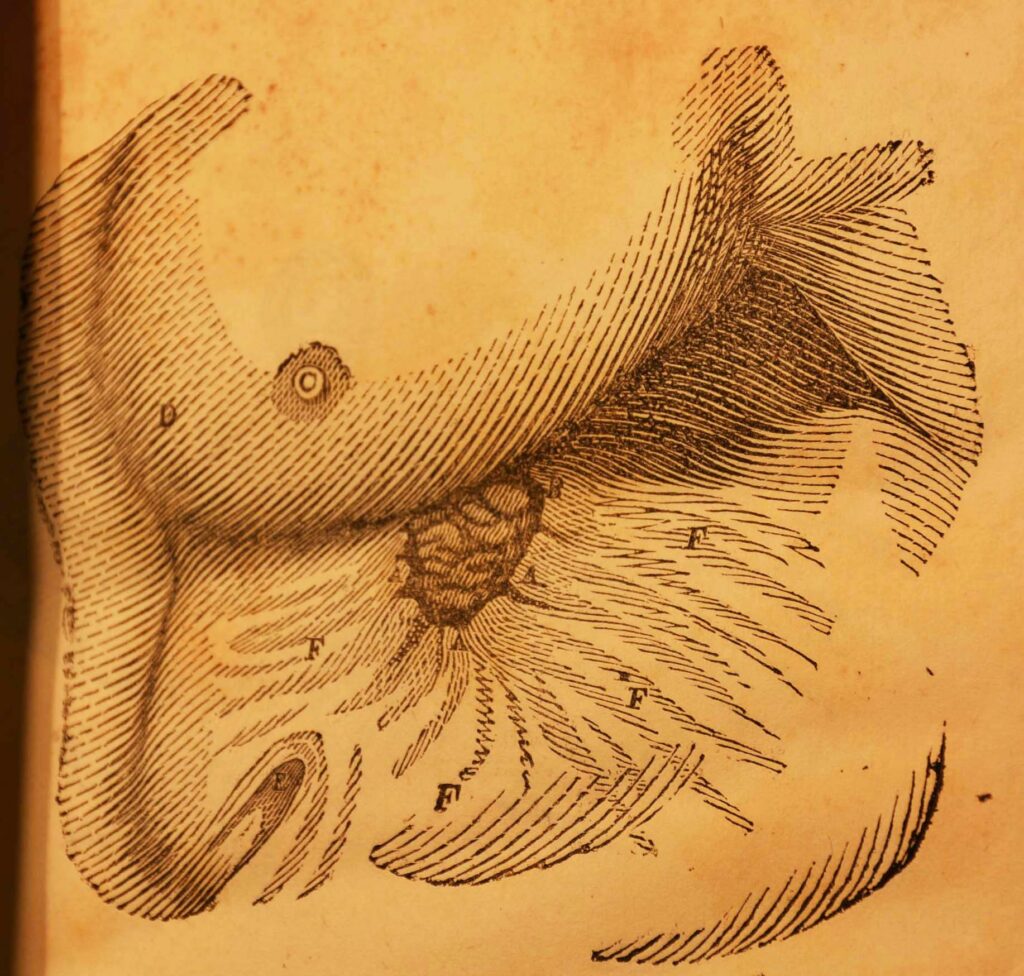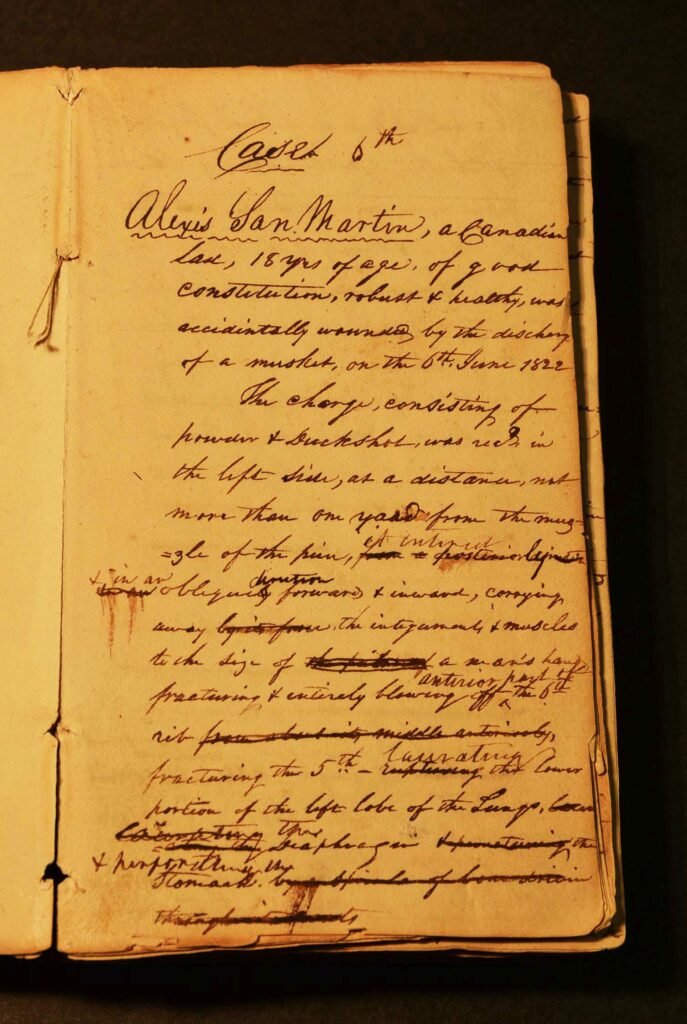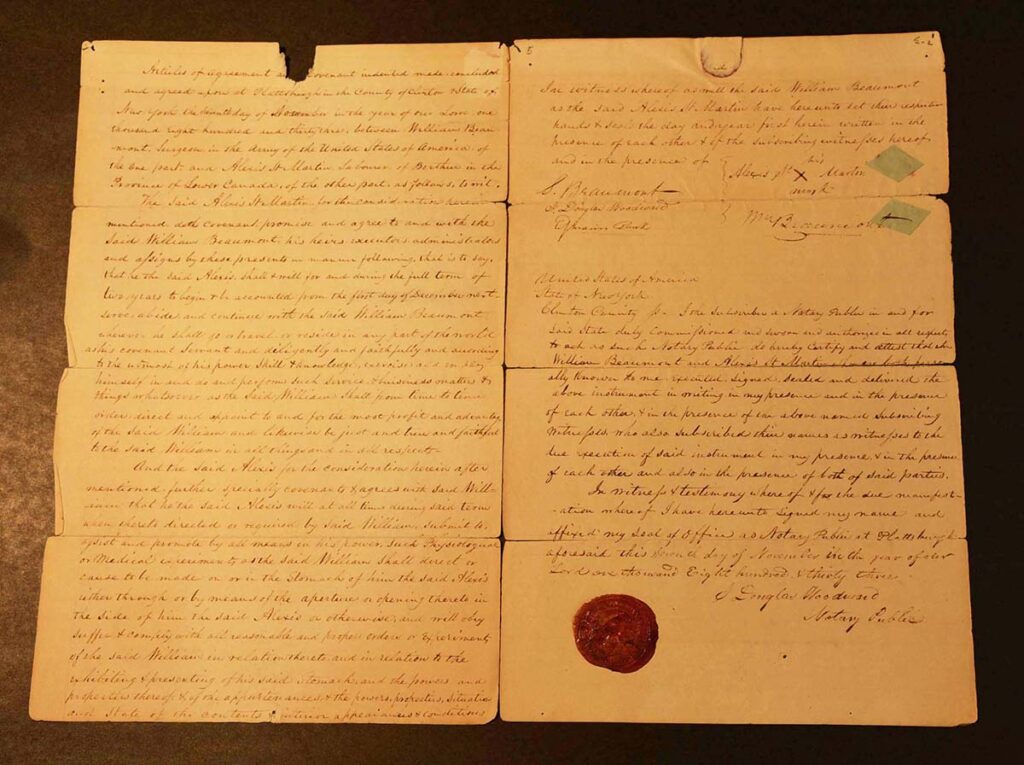William Beaumont (1785-1853) was a United States Army surgeon who served in the War of 1812 and spent over two decades as a physician at frontier army forts located in New York, Michigan, Wisconsin, and Missouri. Today, Beaumont is remembered for his treatment of, and subsequent experiments upon, one of his long-time patients with a unique abdominal wound.

On June 6, 1822, while Beaumont was stationed at Fort Mackinac in the Michigan Territory, he treated a French Canadian named Alexis St. Martin who had been accidentally shot while purchasing supplies at the fort’s general store. Beaumont not only saved his life, but he allowed St. Martin to live with him as he recuperated. St. Martin’s convalescence lasted several years, affording Beaumont the opportunity to closely monitor the gradual recovery of his patient.
Curiously, St. Martin’s wound healed as a fistula, with a permanent opening in his abdomen through which the interior of his stomach was visible from the outside of his body. Beaumont soon discovered that he was able to view the process of digestion via the nearly inch-wide hole leading to St. Martin’s stomach. Seizing upon this rare opportunity — and with St. Martin’s intermittent cooperation for the following ten years — Beaumont conducted hundreds of experiments on the functions of the human stomach. The results of these exhaustive investigations were published in Experiments and Observations on the Gastric Juice and the Physiology of Digestion in 1833.

There were over 250 different experiments in all, with most of them detailing how Beaumont placed various kinds of food directly into St. Martin’s stomach via the fistula. Most often, the food was kept in place by attaching it to a string that Beaumont left dangling outside of the hole to St. Martin’s stomach. Beaumont could then watch the processes of digestion by looking directly into the stomach. He would also remove the food at regularly timed intervals to take weight measurements, and then reinsert the food into the stomach again to continue his observations on digestion. As one might imagine, these experiments were often uncomfortable and painful for St. Martin.

Beaumont’s book, which is available to view in Becker Library’s rare book collections, was heralded as momentous and innovative medical research at the time of publication. Although Beaumont’s discoveries remain important nearly 200 years later, the way in which he conducted his experiments is often criticized from a medical ethics standpoint. Namely, the reason as to why Beaumont never attempted to surgically close St. Martin’s wound, rather than leave his patient with a stomach fistula, is subject to conjecture and speculation. It has been suggested that Beaumont deliberately left the opening exposed for the sake of conducting his medical experiments. If true, this risky decision needlessly subjected St. Martin to a lifetime of discomfort.
The multifaceted relationship between Beaumont and St. Martin is also ethically questionable, as it went far beyond a typical doctor-patient relationship. As evidenced by four different employment contracts signed by both men, St. Martin lived and worked with Beaumont while the experiments took place. In exchange for room, board, and financial compensation, St. Martin worked as a servant to Dr. Beaumont’s family off and on for over a decade.

These signed contracts explicitly allowed Beaumont to conduct his experiments on St. Martin. However, subjecting a domestic worker from his own household to painful experimentation could not possibly be considered a moral or ethical practice, especially under these circumstances where the patient’s “master” was also his physician. As Beaumont was the solitary source of food, housing, and income for St. Martin, one may question if he was truly a voluntary participant in these historic experiments.
The William Beaumont Papers are available for research at the Becker Archives, and most of this incredible collection is available online. In addition to hundreds of Beaumont’s handwritten letters, the notebooks he kept detailing all of his experiments on St. Martin are also available to view in-person in Archives and Rare Books Reading Room.
